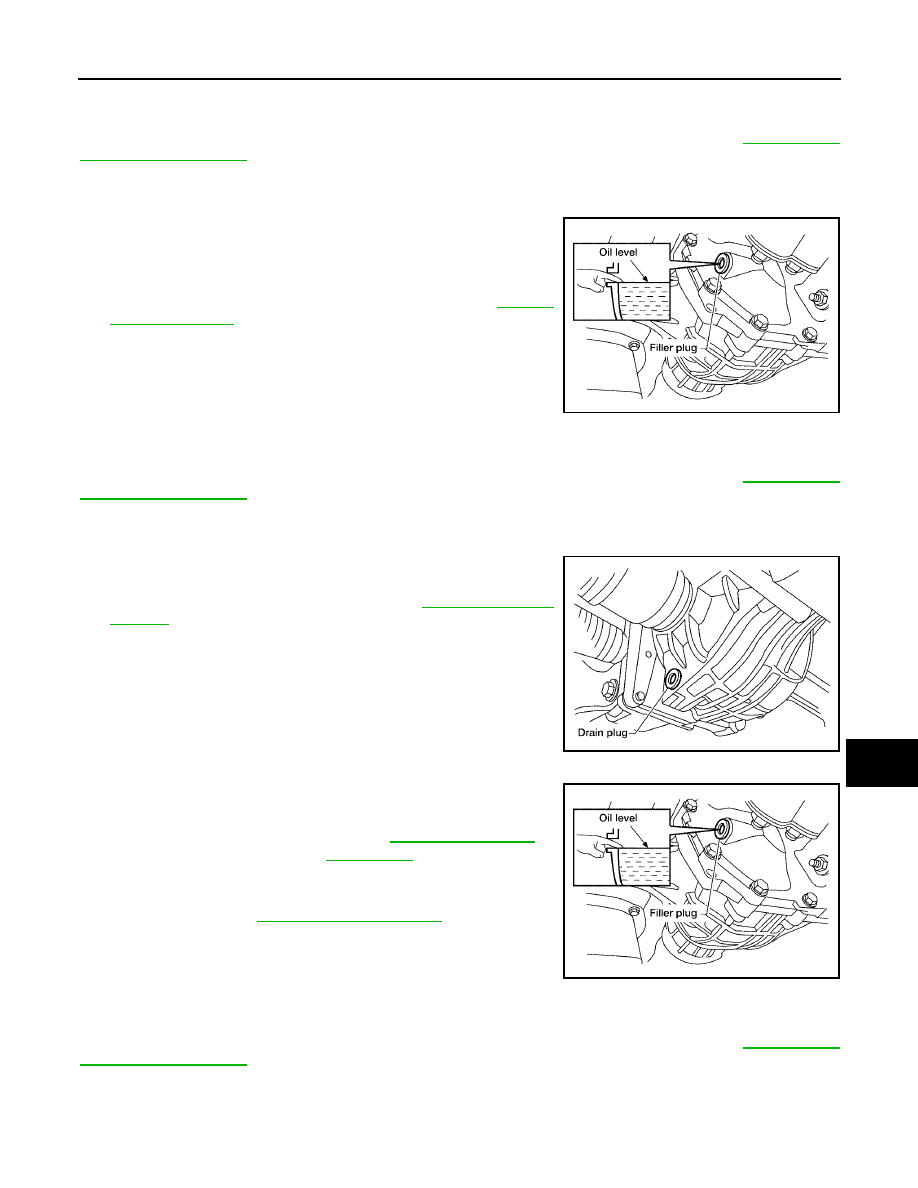Nissan Pathfinder (2006 year). Manual - part 330

CHASSIS AND BODY MAINTENANCE
MA-27
C
D
E
F
G
H
I
J
K
M
A
B
MA
2006 Pathfinder
Checking Front Final Drive Oil
ELS001OV
CAUTION:
If using the vehicle for towing, the final drive oil must be replaced as specified. Refer to
OIL LEAKAGE AND OIL LEVEL
1.
Make sure that oil is not leaking from the final drive assembly or around it.
2.
Check oil level from the filler plug hole as shown.
CAUTION:
Do not start engine while checking oil level.
3.
Install the filler plug with a new gasket on it to the final drive
assembly. Tighten to the specified torque. Refer to
CAUTION:
Do not reuse gasket.
Changing Front Final Drive Oil
ELS001OW
CAUTION:
If using the vehicle for towing, the final drive oil must be replaced as specified. Refer to
DRAINING
1.
Stop the engine.
2.
Remove the drain plug and gasket. Drain the gear oil.
3.
Install the drain plug with a new gasket to the final drive asssem-
bly. Tighten to the specified torque. Refer to
.
CAUTION:
Do not reuse gasket.
FILLING
1.
Remove the filler plug and gasket. Fill with new gear oil until the
oil level reaches the specified level near the filler plug hole.
2.
After refilling oil, check the oil level. Install the filler plug with a
new gasket on it to the final drive assembly. Tighten to the spec-
ified torque. Refer to
CAUTION:
Do not reuse gasket.
Checking Rear Final Drive Oil
ELS001OX
CAUTION:
If using the vehicle for towing, the final drive oil must be replaced as specified. Refer to
OIL LEAKAGE AND OIL LEVEL
1.
Make sure that oil is not leaking from the final drive assembly or around it.
LDIA0176E
LDIA0175E
Oil grade and capacity
Refer to
.
LDIA0176E